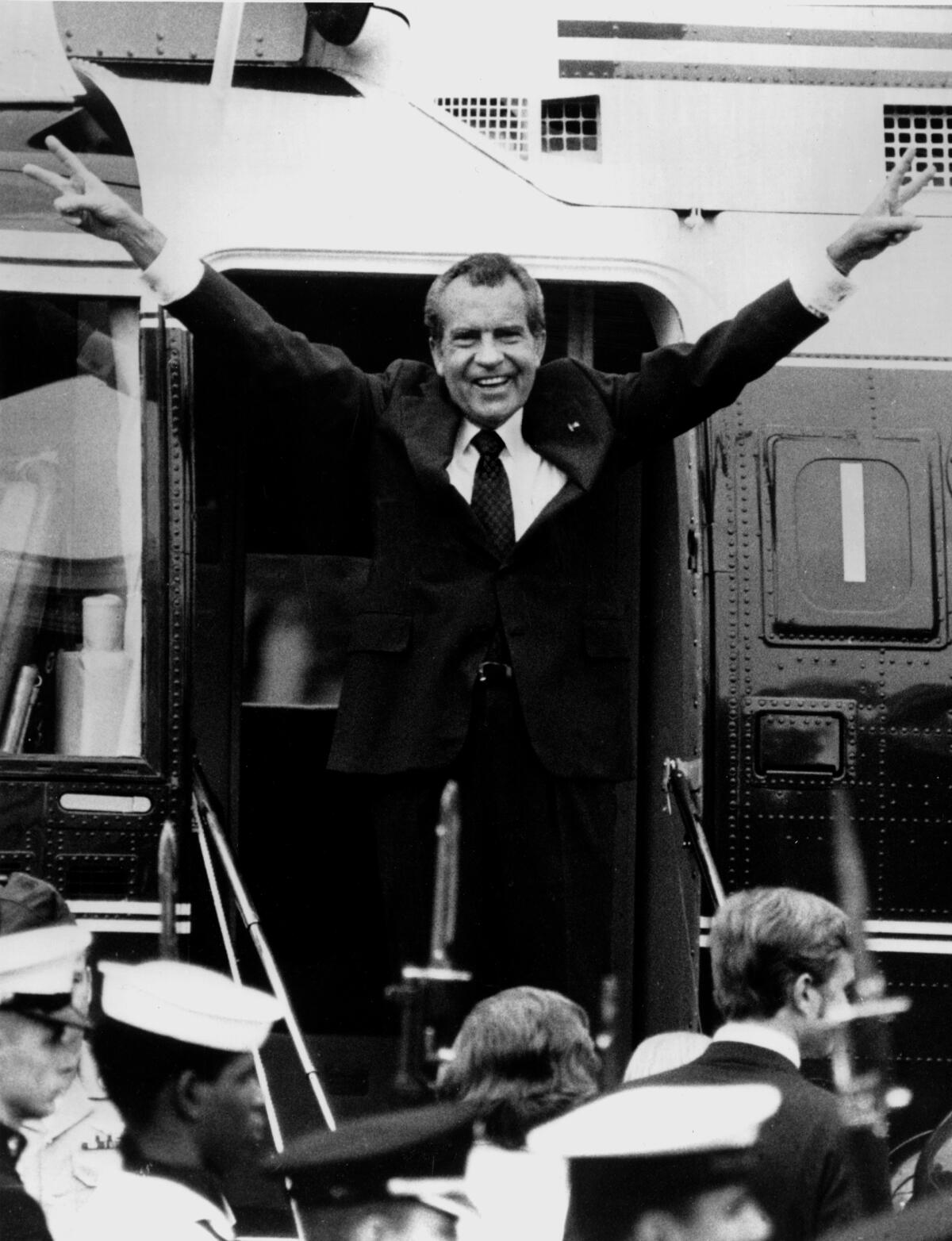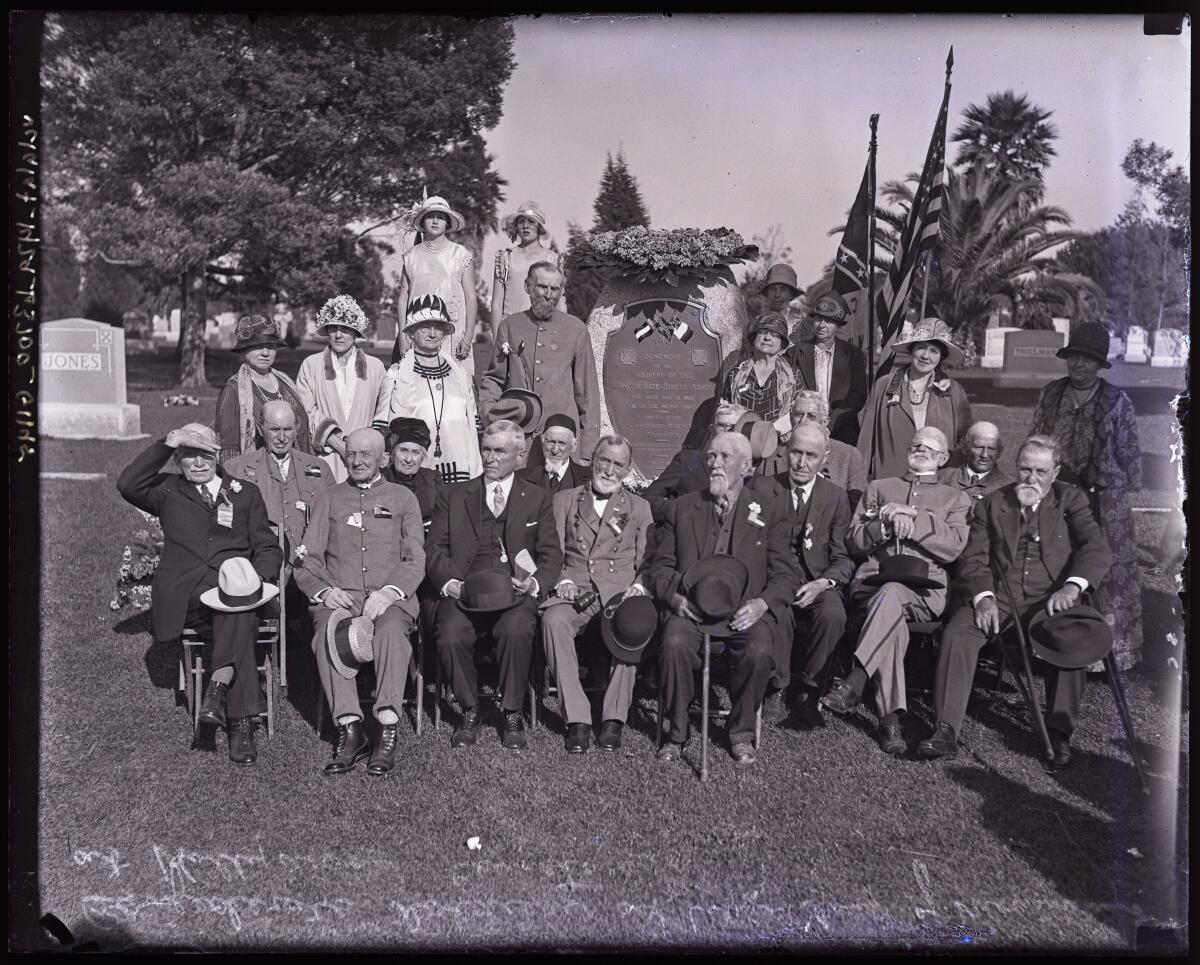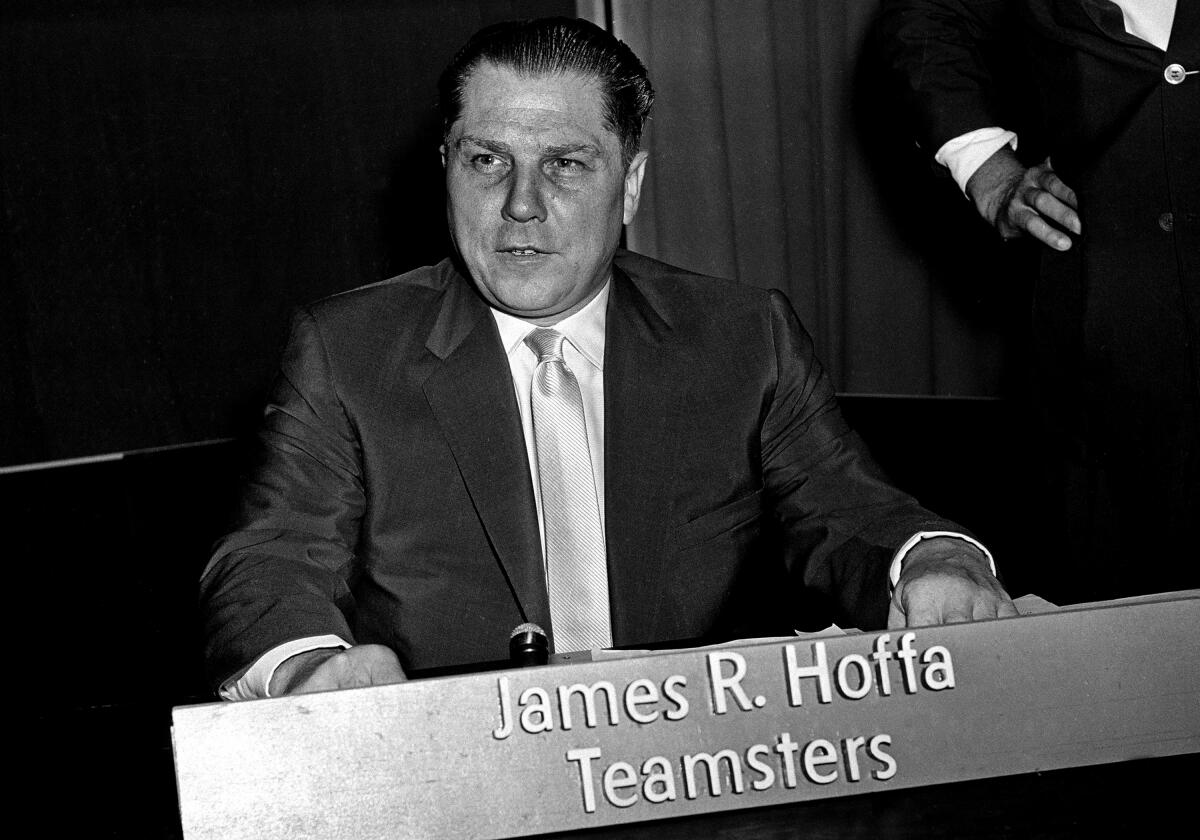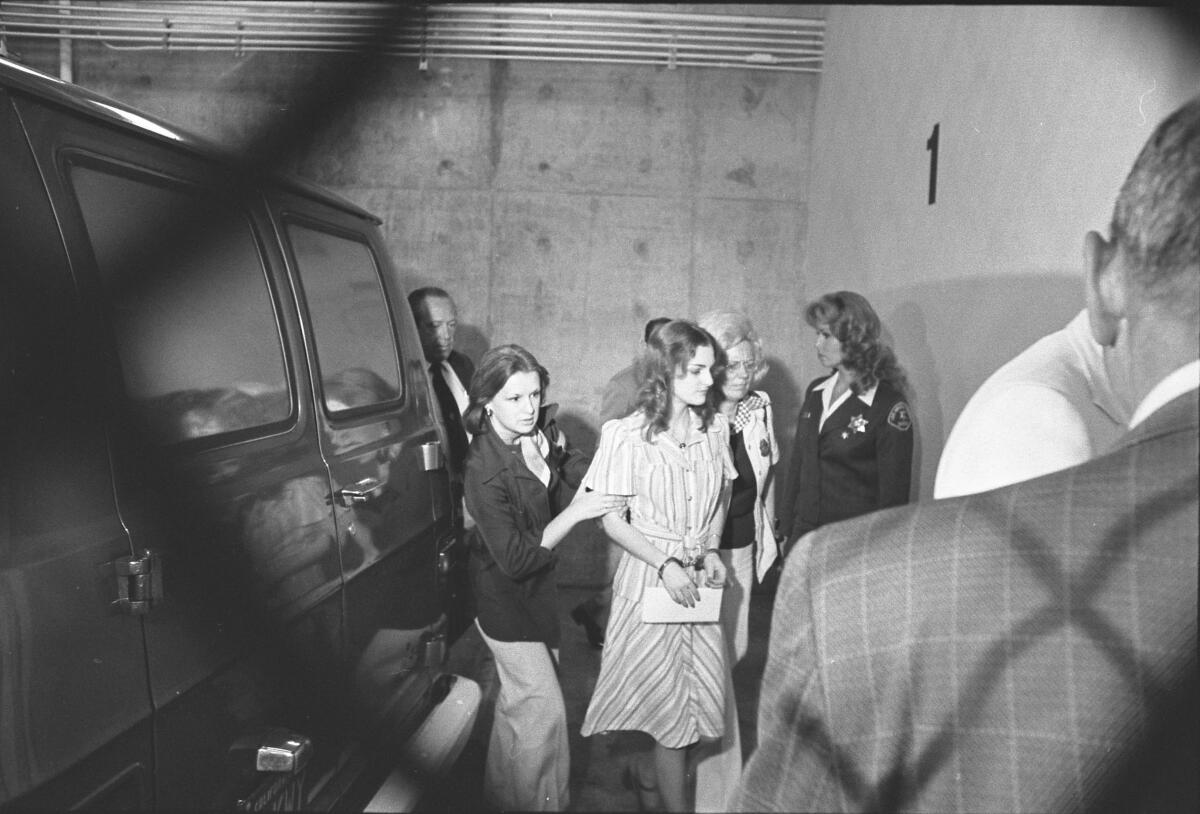Trump and Biden add to long, strange history of presidential pardons

- Share via
- Presidential pardons began with the George Washington, who pardoned those who participated in the violence known as the Whiskey Rebellion.
- Long before Jack Sparrow, there was the Caribbean pirate Jean Lafitte, and he got a presidential pardon.
- New York Yankees owner George Steinbrenner was pardoned by Ronald Reagan.
All it took was a few strokes of the pen for Donald Trump and Joe Biden to add to a long, strange American tradition.
The presidential pardon dates back to George Washington more than two centuries ago. Bestowed upon thousands and thousands of Americans since then, it remains a power both unique and highly subjective.

“Generally, presidents may pardon any federal crime,” says Jeffrey Crouch, an assistant law professor at American University in Washington, D.C. “Moreover, they may use clemency as often as they would like.”
This authority has led to controversial decisions, including reprieves for the likes of President Richard Nixon, officials implicated in the Iran-Contra affair and disgraced commodities trader Marc Rich. The list grew a little longer in recent weeks when Trump pardoned 1,500 or so Jan. 6 rioters and Biden did likewise for some of his closest family members.
The history of executive clemency is also marked by examples that have slipped from memory despite being just as debatable or, in some cases, quirky.
Here is a sampling:
1795: The Whiskey Rebellion
In the early 1790s, Pennsylvania farmers tarred and feathered several government officials sent to collect a new tax on whiskey production. As violence spread, Washington — in his second term as president — personally led a militia force to quell what became known as the Whiskey Rebellion.
Washington decided to issue the first executive clemency in 1795, exonerating “all persons guilty of the said treasons.” Though insistent on the rule of law, he spoke of a need to “mingle in the operations of government every degree of moderation and tenderness.”
1815: The pirate Jean Lafitte
During the War of 1812, British forces approached the notorious Gulf of Mexico smuggler for help in attacking the U.S. coastline. Lafitte not only warned American authorities; he and his crew proved crucial in defending New Orleans.
As a reward, President James Madison pardoned them for any “clandestine and lawless” acts they might previously have committed.
Rioters who were convicted and imprisoned for their roles in the violent attack on the Capitol on Jan. 6 were being released after receiving pardons and commutations from Trump.
1830: George Wilson
This case showed that not all pardons are created equal.
President Andrew Jackson issued an executive clemency that spared Wilson from being hanged for robbing the mail, but did not preclude a lengthy prison term. Wilson turned it down.
Startled authorities looked to the Supreme Court, which ruled Wilson had a right to refuse. Historical accounts regarding what happened next are murky — some say he was hanged; others suggest he accepted a subsequent pardon from President Martin Van Buren.
1858: Brigham Young
The Utah War of 1857-58 began when U.S. Army soldiers marched west to install a new governor for the territory occupied by the Latter-day Saints and their leader Young. Though the yearlong standoff was uneventful, tensions led to Mormons attacking and killing more than 100 innocent people in a wagon train bound for California.
The war finally ended when President James Buchanan — facing criticism for what was known as “Buchanan’s Blunder” — pardoned Young and his followers for resisting the government. In return, they submitted to U.S. rule.
1868: The Confederate army
President Andrew Johnson waited until three years after the Civil War to issue an Independence Day amnesty to anyone who participated in what he called “the rebellion.” Johnson justified the action as a means to “promote and procure complete fraternal reconciliation among the whole people.”

1971: Jimmy Hoffa
The infamous labor leader went to federal prison in 1967 for jury tampering, fraud and conspiracy. Nixon tempered the commutation of his sentence by demanding that he refrain from union activities. But declassified documents show the president’s aides sought to use Hoffa to gain labor support for Nixon’s 1972 reelection campaign.
Several years later, Hoffa disappeared under mysterious circumstances and was never seen again.

1977: Vietnam draft dodgers
On his first full day in office, President Jimmy Carter issued a blanket pardon to anyone who had evaded the draft, allowing thousands of young men to return from Canada and other countries. It was part of his campaign vow to address the unfinished business of the Vietnam War.
1977: ‘Tokyo Rose’
It was 1941 when Iva Ikuko Toguri — born in Los Angeles, educated at UCLA — moved to Japan. After the end of World War II, U.S. authorities charged the so-called Tokyo Rose — a radio handle she never used — with being one of several women who broadcast English-language radio shows meant to demoralize American troops. She was convicted of treason and sentenced to 10 years in prison.
Nearly three decades later, after two prosecution witnesses said they testified under duress, President Gerald Ford granted her an unconditional pardon.

1989: George Steinbrenner
The bombastic owner of the New York Yankees was convicted and fined, but not imprisoned, for making illegal contributions to Nixon’s 1972 campaign. Years later, President Ronald Reagan issued a pardon that did not cleanse Steinbrenner’s record but did restore his full citizenship rights.
2001: Patty Hearst
The newspaper heiress, who was kidnapped by the Symbionese Liberation Army and later joined them as “Tania,” was the recipient of two presidential actions. Carter commuted her prison sentence for bank robbery in 1979, then President Bill Clinton issued a full pardon on his final day in office.

More to Read
Sign up for Essential California
The most important California stories and recommendations in your inbox every morning.
You may occasionally receive promotional content from the Los Angeles Times.












